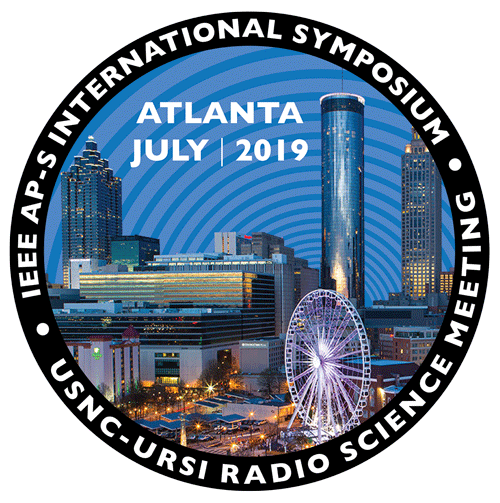URSI Topics
Commission A: Electromagnetic Metrology
USNC Chair: Jeanne Quimby (Jeanne.Quibmy@nist.gov)
- A.1: Microwave to sub-millimeter measurements/standards
- A.2: Quantum metrology and fundamental concepts
- A.3: Time and frequency
- A.4: Time-domain metrology, EM-field metrology
- A.5: EMC and EM metrology
- A.6: Noise
- A.7: Materials
- A.8: Bioeffects and medical applications
- A.9: Antennas
- A.10: Impulse radar
- A.11: Interconnect and packaging
- A.12: Test facilities
- A.13: THz metrology
- A.14: High-Frequency and millimeter wireless metrology
Commission B: Fields and Waves
USNC Chair: Jamesina Simpson (Jamesina.simpson@utah.edu)
- B.1: Antenna arrays
- B.2: Antenna theory, design, and measurements
- B.2.1: Active antennas
- B.2.2: Active and passive antenna matching
- B.2.3: Antenna and propagation measurement techniques
- B.2.4: Small antennas
- B.2.5: Other antenna topics
- B.3: Complex, novel, or specialized media
- B.3.1: Electromagnetic bandgap (EBG) structures
- B.3.2: Biological media
- B.3.3: Geophysical media
- B.3.4: Metamaterials
- B.4: Educational methods and tools
- B.5: Electromagnetic interaction and coupling
- B.6: Frequency selective surfaces and filters
- B.7: Guided waves and wave-guiding structures
- B.8: High-frequency techniques
- B.9: Imaging, inverse scattering and remote sensing
- B.10: Microstrip antennas and printed devices
- B.11: Millimeter wave and Terahertz antennas
- B.12: MIMO antennas and systems
- B.13: Nanoscale electromagnetics
- B.14: Nonlinear electromagnetics
- B.15: Numerical methods
- B.15.1: Fast methods
- B.15.2: Finite-difference methods
- B.15.3: Frequency-domain methods
- B.15.4: Hybrid methods
- B.15.5: Integral-equation methods
- B.15.6: Time-domain methods
- B.16: Optimization techniques
- B.17: Propagation phenomena and effects
- B.18: Rough surfaces and random media
- B.19: RFID
- B.20: Scattering and diffraction
- B.21: Theoretical electro magnetics
- B.22: Transient fields, effects, and systems
- B.23: Ultra-wideband electromagnetics
- B.24: Wireless communications
- B.25: Wireless sensors and sensing networks
- B.26: Cognitive radio
- B.26.1: Reconfigurable antennas
- B.26.2: Simultaneous transmit and receive systems
- B.26.3: Spectrum enhancement techniques
Commission C: Radiocommunication Systems and Signal Processing
USNC Chair: Eric L. Mokole (emokole@mitre.org)
- C.1: Cognitive radio and software defined radio
- C.2: Computational imaging and inverse methods
- C.3: Information theory, coding, modulation and detection
- C.4: MIMO and MISO systems
- C.5: Radar systems, target detection, localization, and tracking
- C.6: Radio communication systems
- C.7: Sensor networks, and sensor-array processing and calibration
- C.8: Signal and image processing
- C.9: Spectrum and medium utilization
- C.10: Synthetic aperture and space-time processing
- C.11: Ground Penetrating Radar (GPR)
Commission E: Electromagnetic Environment and Interference
USNC Chair: Larry Cohen (lawrence.cohen@nrl.navy.mil)
- E.1: Electromagnetic environment
- E.1.1: Electromagnetic noise of natural origin
- E.1.2: Man-made noise
- E.2: Electromagnetic compatibility measurement technologies
- E.3: Electromagnetic compatibility standards
- E.4: Legal aspects of electromagnetic compatibility
- E.5: Electromagnetic radiation hazards
- E.6: Electromagnetic compatibility education
- E.7: Computational electromagnetics in electromagnetic compatibility
- E.7.1: Computer Modeling
- E.7.2: Model Validation
- E.7.3: Statistical Analysis
- E.8: Effects of natural and intentional emissions on system performance
- E.8.1: Crosstalk
- E.8.2: Effects of transients
- E.8.3: System analysis
- E.8.4: Signal integrity
- E.8.5: Electromagnetic compatibility in communication systems
- E.8.6: Statistical analysis
- E.9: High-power electromagnetics
- E.9.1: Electrostatic discharge
- E.9.2: Electromagnetic pulse and lightning
- E.9.3: Transients
- E.9.4: Power transmission
- E.10: Spectrum management
Commission F: Wave Propagation and Remote Sensing
USNC Chair: Kamal Sarabandi (saraband@eecs.umich.edu)
- F.1: Point-to-point propagation effects
- F.1.1: Measurements
- F.1.2: Propagation models
- F.1.3: Multipath/mitigation
- F.1.4: Land or water paths
- F.1.5: Scattering/diffraction
- F.1.6: Indoor/outdoor links
- F.1.7: Mobile/fixed paths
- F.1.8: Horizontal/slant paths
- F.1.9: Surface/atmosphere interactions
- F.1.10: Atmospheric constituents
- F.1.11: Dispersion/delay
- F.1.12: Natural/man-made structures
- F.2: Remote sensing of the Earth by radio waves
- F.2.1: Atmospheric sensing
- F.2.2: Ocean and sea ice
- F.2.3: Field campaigns
- F.2.4: Interferometry and SAR
- F.2.5: Subsurface sensing
- F.2.6: Scattering/diffraction
- F.2.7: Radiation and emission
- F.2.8: Propagation effects
- F.2.9: Urban environments
- F.2.10: Soil moisture & terrain
- F.2.11: Propagation and remote sensing in complex and random media
Commission G: Ionospheric Radio and Propagation
USNC Chair: Attila Komjathy (Attila.Komjathy@jpl.nasa.gov)
- G.1: Ionospheric imaging
- G.2: Ionospheric morphology
- G.3: Ionospheric modeling and data assimilation
- G.4: Meteoroids and orbital debris
- G.5: Radar and radio techniques for ionospheric diagnostics
- G.6: Space weather – radio effects
- G.7: Transionospheric radio propagation and systems effects
Commission K: Electromagnetics in Biology and Medicine
USNC Chair: Majid Manteghi (manteghi@vt.edu)
- K.1: Biological effects
- K.2: Dosimetry and exposure assessment
- K.3: Electromagnetic imaging and sensing applications
- K.4: Human body interactions with antennas and other electromagnetic devices
- K.5: Therapeutic, rehabilitative, and other biomedical applications
- K.6: Body-area networks
- K.7: Medical devices

